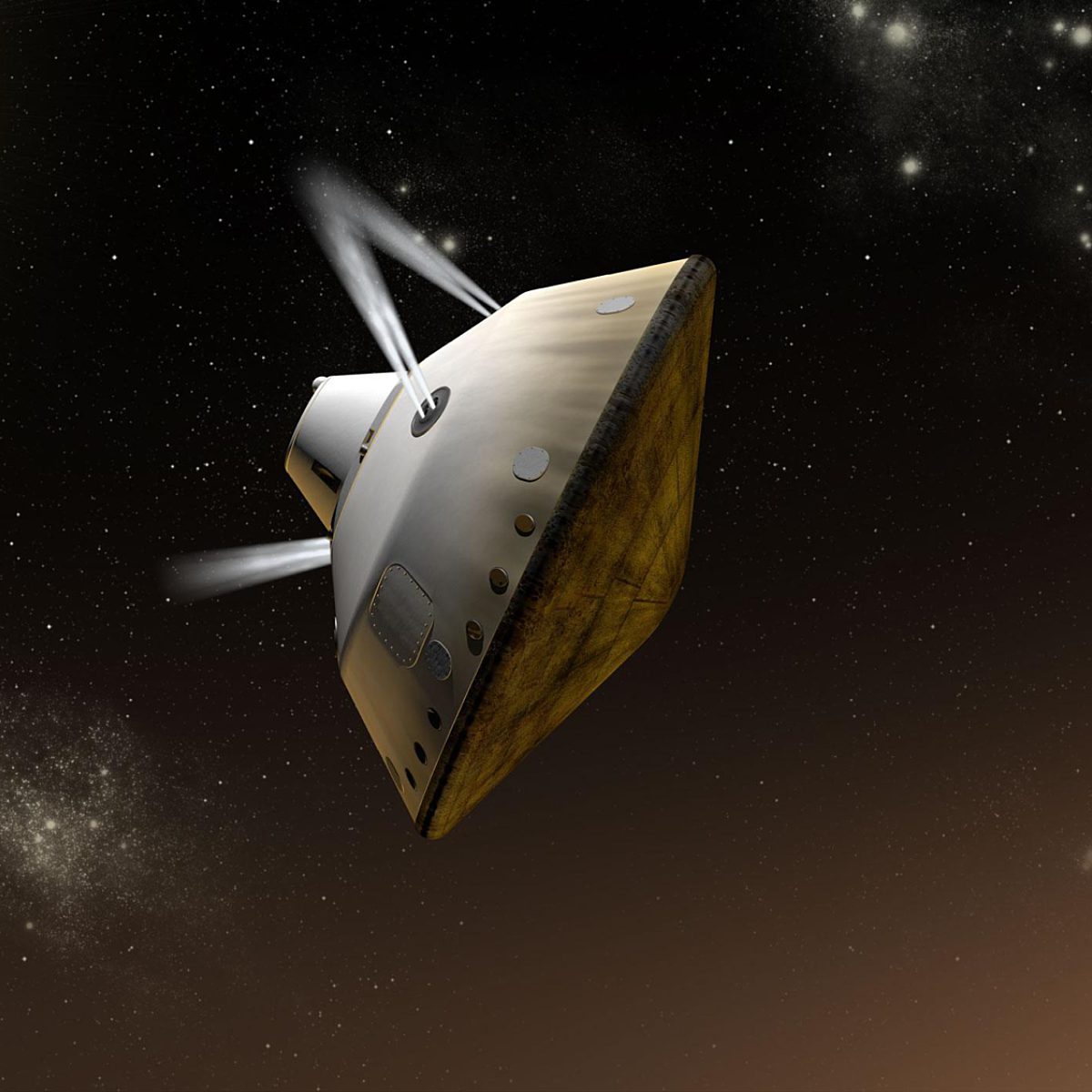All
All
Stories, updates, insights, and original analysis from The Planetary Society.
How Curiosity Will Land on Mars, Part 3: Skycrane and Landing
The final phase of Curiosity's landing on Mars involves the
How Curiosity Will Land on Mars, Part 2: Descent
When people first hear about how Curiosity will land on Mars, their first question always is: are they nuts? This is the second in a multi-part series describing how -- and why -- Curiosity will land this way, in excruciating detail.
How Curiosity Will Land on Mars, Part 1: Entry
When people first hear about how Curiosity will land on Mars, their first question always is: are they nuts? This is the first in a multi-part series describing how -- and why -- Curiosity will land this way, in excruciating detail.
Cosmoquest Science Hangout Wednesday June 20 2300 UTC: Ravi Prakash, Curiosity engineer
This Cosmoquest Science Hangout featured Ravi Prakash, Curiosity Entry, Descent, and Landing Systems Engineer. He explained how Curiosity will land on Mars, and why they've changed things since Spirit and Opportunity landed.
In which I visit Mojave Spaceport and meet WhiteKnightTwo and SpaceShipTwo
It was just a coincidence, but a cool one, that I got a chance to visit the Mojave Spaceport so soon after the dramatic
Examining India's new RISAT 1 Earth observation satellite
Last week, India launched RISAT 1, a new Earth-observing satellite. How does its synthetic aperture radar compare to that of Envisat, which has fallen silent?
Planets around Alpha Centauri?
Do planets circle our closest stellar neighbors, the system loved by science fiction: Alpha Centauri? We don’t know. But, Debra Fischer, Julien Spronck, and their colleagues at Yale University, in part with Planetary Society support, are trying to find out.
Pioneer Anomaly Solved!
With the latest piece of the puzzle just published in a scientific journal, a solar system mystery that has perplexed people for more than 20 years has been solved, truly thanks to the support of Planetary Society members.
Of inclinations and azimuths
A classified U.S. military satellite recently launched into an orbital inclination of 123 degrees. What makes this trajectory so unique? Pondering the answer affords the opportunity to learn some deceptively tricky concepts about the nature of all spacecraft orbits.
Visiting a Solar Sail in the OC
The city of Tustin is about an hour's drive from Planetary Society HQ in Pasadena. That's when the freeway gods are kind, which they never are. The trip I made there yesterday was well worth the trouble.
Cool stuff brewing at Honeybee Robotics
Yesterday I was treated to a little tour (little, because it's a little building) of Honeybee Robotics' office here in Pasadena. Honeybee is developing some great technology for future space missions for Earth, Mars, and beyond.
Infographic: Viewing our universe's colors
An infographic explains in what
Planetary Radio: A Modest Plea For Both Big and Not-So-Big Space Science Funding
This weeks Planetary Radio features updates on the James Webb Space Telescope, from Deputy Project Director Eric Smith. The discussion centers around the budget controversy, and why the JWST is worth the money.
The state of Earth observation, January 2012
As of November 2011, the Earth Observing Handbook counts 109 active missions to study the Earth as a planet, with 112 more approved and planned for the future. Jason Davis provides an overview of key current and upcoming earth-observing missions.
How did they make the nuclear power source for the Curiosity rover?
Maybe it's because I was a kid during the Cold War; I always assume that information about anything nuclear only comes out on that
The fish that sent us to the moon
The tale of NASA's Super Guppy aircraft, which ferried parts of America's space program to their launch pads.
A new trick for IKAROS: Spinning the other way
JAXA's solar sail demonstration craft IKAROS is still puttering along, 17 months after it launched, and its controllers back on Earth keep coming up with new things to try with it. I'm pretty amazed by the most recent trick: reversing its spin direction. This may not sound like a big deal, but it is, especially for IKAROS.
Decoding SpaceX's re-usable spacecraft concept
Breaking down the futuristic technologies for SpaceX's reusable Grasshopper spacecraft, as shown in a recent promotional video.
Weekend watching: 3D Movie from Mars
There's one Mars landed mission for which there is a long 3D film, and that's Viking. Grab your 3D glasses, and be prepared to be transported to Mars.
Your guide to a shuttle landing
The final installment of my three-part series on the basics of shuttle launches and landings. Part III: de-orbiting, re-entering and landing.


 Explore Worlds
Explore Worlds Find Life
Find Life Defend Earth
Defend Earth


 Sun
Sun Mercury
Mercury Venus
Venus Earth
Earth Mars
Mars Jupiter
Jupiter Saturn
Saturn Uranus
Uranus Neptune
Neptune Small Bodies
Small Bodies

















